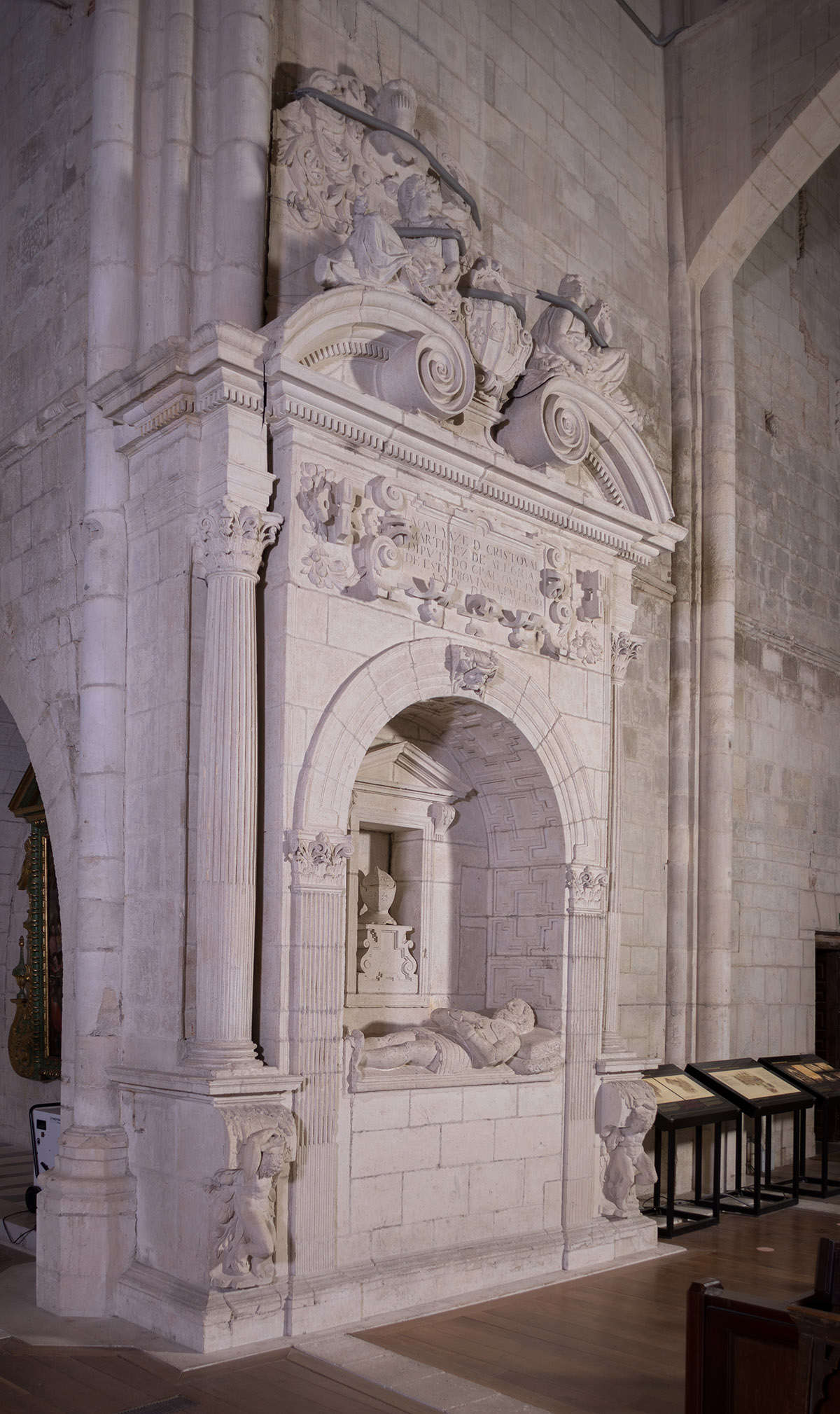Tomb of Cristóbal Martínez de Alegría
Tomb of Cristóbal Martínez de Alegría
This tomb is located in the Chapel of Saint Benedict, associated with the Martínez de Alegría family since the late 16th century, although it later passed into the hands of the Velasco family. Deputy General Cristóbal Martínez de Alegría was granted the opportunity to position a small altarpiece dedicated to Saint Benedict in 1581, including permission for the tomb in which he was to be buried. It is located at the beginning of the transept arm on the Gospel side and was commissioned to Esteban de Velasco, a renowned sculptor from Vitoria, on 6 May 1581. The entire ensemble was made with white stone from the Ajarte quarry (Treviño), except for the funerary bundle, which was carved with stone from Santa Pía (Salvatierra). It is an arcosolium tomb in the Renaissance style. The recumbent body of the deceased, Cristóbal Martínez de Alegría, lies under a semicircular arch. He is dressed in armour, an appropriate outfit for a knight who had held various public posts, such as that of Deputy General of Alava or advisor to Philip II. The ensemble is surmounted by an inscription on a choreiform cartouche, a curved split pediment flanked by two virtues and a coat of arms. Both the architecture and entire decorative work of the tomb are in the style of international Mannerism.
Locution
Ficha técnica
BASIC BIBLIOGRAPHY
AZCÁRATE RISTORI, José M.ª de. “Catedral de Santa María (catedral Vieja)”. En: PORTILLA VITORIA, Micaela J. et al. Catálogo Monumental Diócesis de Vitoria: Ciudad de Vitoria. Vitoria-Gasteiz: Obra Cultural de la Caja de Ahorros Municipal, tomo III, 1968, p. 105.
ECHEVERRIA GOÑI, Pedro L. “Renacimiento”, En: GONZÁLEZ DE SAN ROMÁN, Miguel (dir.). Vitoria-Gasteiz en el Arte. Vitoria-Gasteiz: Gobierno Vasco, vol. 2. 1997, pp. 326, 338-342.
GONZÁLEZ DE ZÁRATE, Jesús M. Burgos como centro difusor de motivos icónicos en el Arte Sepulcral del Renacimiento norteño, López de Gámiz, números X-XI. 1986, p. 80.
MARTÍN MIGUEL, María Ángeles. Arte y cultura en Vitoria durante el siglo XVI. Vitoria-Gasteiz: Ayuntamiento de Vitoria-Gasteiz, 1998, pp. 318-321.



